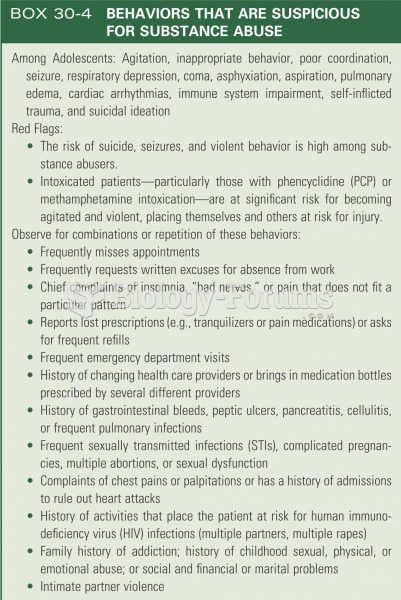This topic contains a solution. Click here to go to the answer
|
|
|
Did you know?
To maintain good kidney function, you should drink at least 3 quarts of water daily. Water dilutes urine and helps prevent concentrations of salts and minerals that can lead to kidney stone formation. Chronic dehydration is a major contributor to the development of kidney stones.
Did you know?
In 1864, the first barbiturate (barbituric acid) was synthesized.
Did you know?
The human body produces and destroys 15 million blood cells every second.
Did you know?
Asthma is the most common chronic childhood disease in the world. Most children who develop asthma have symptoms before they are 5 years old.
Did you know?
The first oncogene was discovered in 1970 and was termed SRC (pronounced "SARK").







